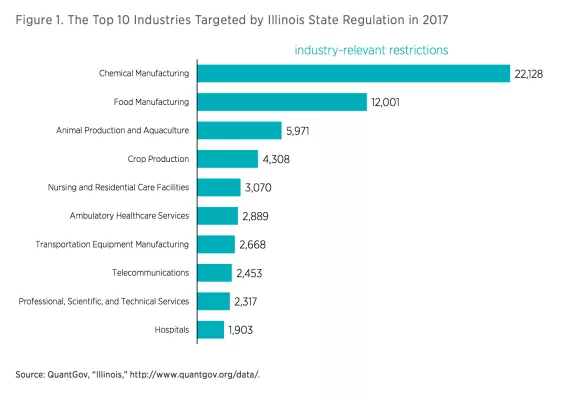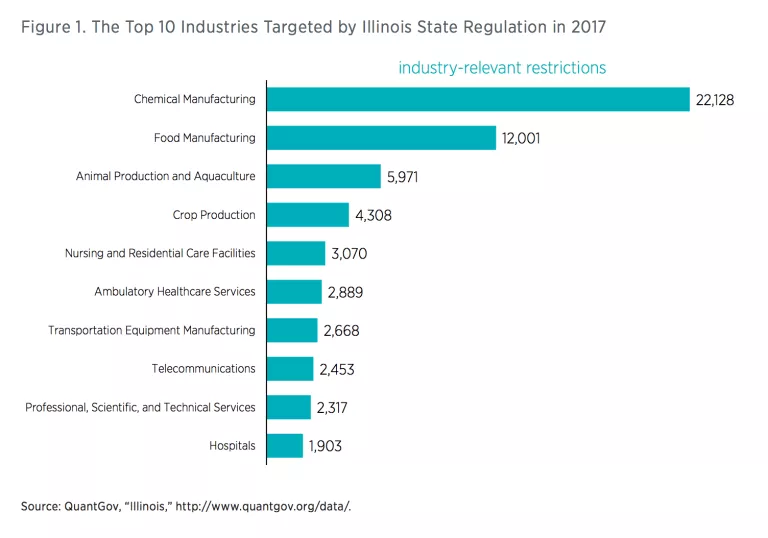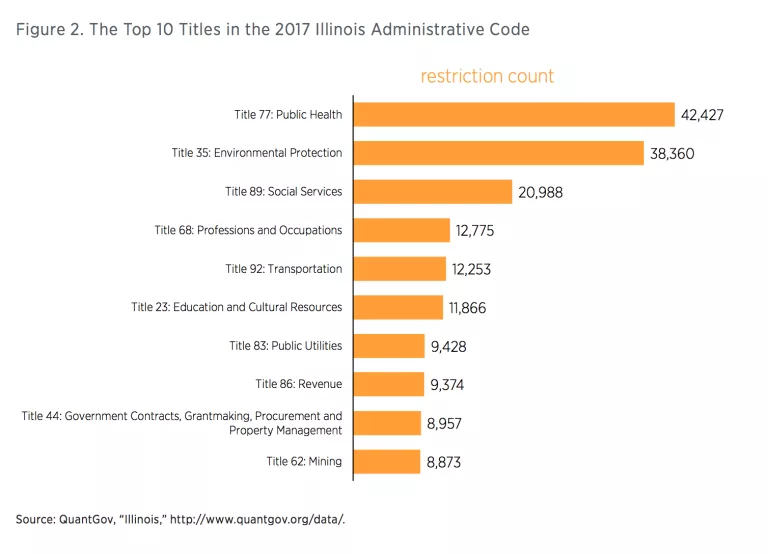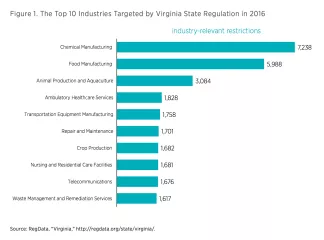
It would take an ordinary person almost three years to read the entire US Code of Federal Regulations (CFR), which contained over 103 million words in 2012. The sheer size of the CFR poses a problem not just for the individuals and businesses that want to stay in compliance with the law, but also for anyone interested in understanding the consequences of this massive system of rules. States also have sizable regulatory codes, which add an additional layer to the enormous body of federal regulation. For example, the online version of the 2017 Illinois Administrative Code contained 33 titles comprised of over 48,000 unique sections of text.
A tool known as QuantGov—a platform for analyzing and quantifying legal text—was developed by researchers at the Mercatus Center at George Mason University. QuantGov captures information in minutes that would take an ordinary person hours, weeks, or even years. For example, the tool allows researchers to identify the industries most targeted by regulation by connecting keywords relevant to those industries with restriction counts. Restrictions are words and phrases like “shall,” “must,” “may not,” “prohibited,” and “required” that signify legal constraints and obligations. As shown in figure 1, the top three industries with the highest estimates of industry-relevant restriction counts in the 2017 Illinois code are chemical manufacturing, food manufacturing, and animal production and aquaculture.

The titles of the Illinois Administrative Code are organized based on the type of regulation housed within those titles. Figure 2 shows that in 2017, rules related to public health, which are found in title 77, contained over 42,000 restrictions. This makes it the biggest title in the Illinois code. Coming in second is title 35, which is related to environmental protection. This title includes over 38,000 restrictions.

Federal regulation tends to attract the most headlines, but it is important to remember that the 100 million words and over 1 million restrictions in the federal code are just the tip of the iceberg when it comes to the true scope of regulation in the United States. States like Illinois write millions of additional words of regulation and hundreds of thousands of additional restrictions. State-level requirements carry the force of law to restrict individuals and businesses just as federal ones do.
Researchers are only beginning to understand the consequences of the massive and growing federal regulatory system on economic growth and other measures of well-being in the United States. Meanwhile, the effects of state regulation remain largely unknown. If this snapshot of Illinois regulation in 2017 is a good indicator, then the states are also active regulators, suggesting the true impact of regulation on society is far greater than that of federal regulation alone.


